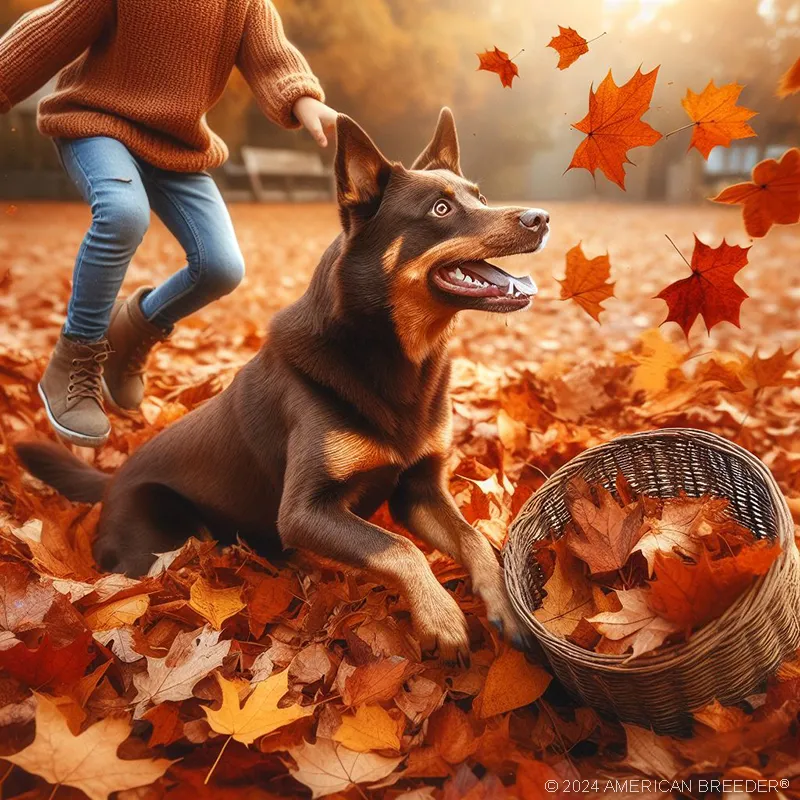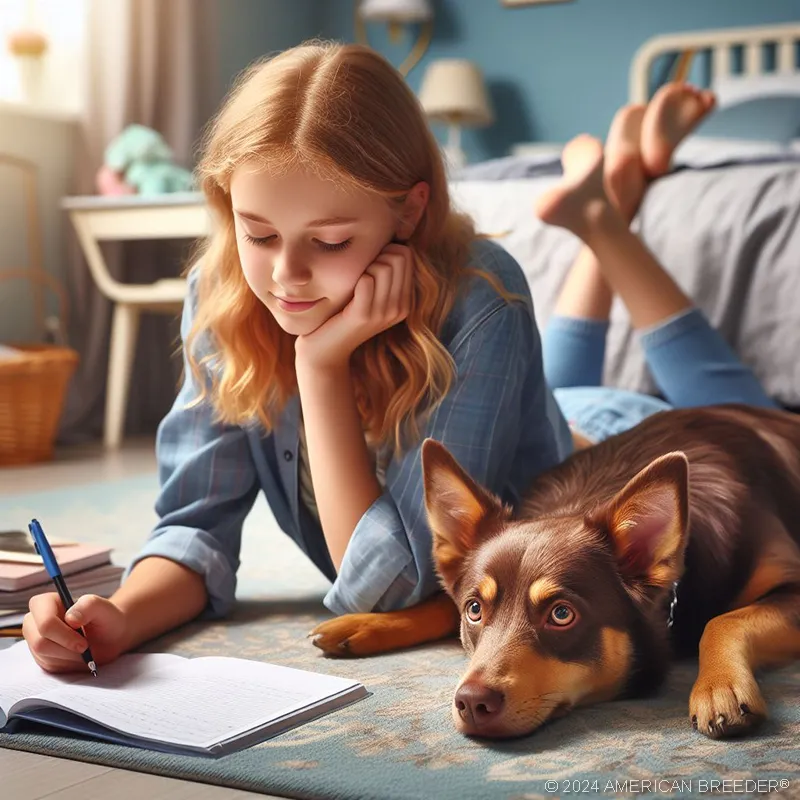Essential Guide to Australian Kelpie Dogs
The Australian Kelpie is an extraordinary breed known for its intelligence, agility, and strong work ethic. Before considering this breed, it's important to understand their high energy levels and exercise requirements. Here are some interesting facts about Australian Kelpies: they were originally bred for herding livestock, they have exceptional problem-solving skills, and they are renowned for their ability to handle difficult and stubborn animals.
Appearance and Physical Characteristics
Australian Kelpies are medium-sized dogs with a well-balanced and athletic build. They typically stand between 17 and 20 inches tall at the shoulder and weigh between 25 and 45 pounds. Their physical features include a muscular body, a broad chest, and a deep abdomen, giving them great endurance and agility.
These dogs have a weather-resistant double coat that comes in various colors, including black, chocolate, red, and blue. Some Kelpies may have tan or cream markings on their legs, face, and chest. Their coat is usually short and dense, providing protection against harsh weather conditions.
Breed Background and Country of Origin
The Australian Kelpie originated in Australia during the late 19th century. They were developed by crossing British working dogs, such as the Border Collie and the Dingo, with local Australian dogs. The breed's primary purpose was to handle livestock, specifically sheep, in the vast Australian farming areas.
Due to their outstanding herding abilities and adaptability to the harsh Australian climate, Kelpies quickly gained popularity among farmers. Today, they are highly regarded as exceptional working dogs, but they have also become beloved companions and successful competitors in various dog sports and activities.
Australian Kelpies are known for their remarkable intelligence and loyalty. They are diligent, hardworking, and excel at problem-solving. These dogs have a strong herding instinct, which can manifest as them attempting to herd people, animals, or even objects.
In terms of temperament, Kelpies are typically alert, energetic, and highly active. They require mental stimulation and physical exercise to prevent boredom and potential behavior issues. While they can be reserved with strangers, they are generally affectionate, friendly, and devoted to their families. With proper socialization, they can get along well with children, other dogs, and even cats.
Recognition by AKC (American Kennel Club)
The Australian Kelpie was officially recognized by the American Kennel Club (AKC) in 2017. AKC recognition is significant for the breed as it provides a standardized set of breed standards that ensure the preservation of the breed's characteristics. It also allows Kelpies to compete in various AKC events and shows.
Training Suggestions
Training Australian Kelpies requires patience, consistency, and positive reinforcement methods. These dogs are highly intelligent and eager to please their owners, making them quick learners. However, they can also be independent and may test boundaries, so firm and fair leadership is essential.
Start training early and focus on socialization to ensure they become well-rounded dogs. Basic obedience commands, as well as advanced training for dog sports or herding activities, can keep their active minds engaged. Providing them with plenty of physical exercise and mental challenges will help channel their energy in a positive way.
Grooming requirements: Australian Kelpies have a low-maintenance coat that only requires brushing once a week to remove loose hair and keep it in good condition. They are moderate shedders, and during shedding seasons, more frequent brushing may be necessary to manage the amount of hair being shed.
Exercise needs: Australian Kelpies are highly active dogs and require plenty of exercise to keep them physically and mentally stimulated. They thrive in an environment where they can engage in daily activities such as long walks, jogging, or participating in dog sports like agility, obedience trials, or herding trials. Regular exercise is crucial to prevent boredom and potential behavior problems.
Health considerations: Overall, Australian Kelpies are a healthy breed with few breed-specific health issues. However, like all dogs, they may be prone to certain conditions such as hip dysplasia, progressive retinal atrophy (PRA), and luxating patella. Regular vet check-ups, a balanced diet, and maintaining a healthy weight can help minimize the risk of these health concerns.
Feeding guidelines: The nutritional needs of Australian Kelpies may vary depending on their activity level and age. It's important to provide them with a high-quality dog food appropriate for their size, age, and energy requirements. Consult with a veterinarian to determine the proper feeding guidelines for your Kelpie.
Shedding: Australian Kelpies are moderate shedders. While they do shed throughout the year, they have a seasonal shedding period where they may shed more heavily. Regular brushing can help manage shedding and keep their coat in good condition.
Tendency to drool: Australian Kelpies are not known for excessive drooling. They generally have clean mouths and produce minimal drool.
Snoring tendencies and noise level during sleep: Australian Kelpies typically do not have significant snoring tendencies. During sleep, they usually sleep quietly without excessive noise.
Loudness level of bark and tendency to bark: Kelpies are known for their alertness and may bark to communicate or alert their owners. However, with proper training and socialization, their barking can be controlled. Early training can help them understand when it is appropriate to bark and when it is not.
Compatibility with specific living arrangements or environments: Australian Kelpies are highly adaptable and can thrive in various living arrangements. However, due to their high energy levels and exercise needs, they are best suited for active individuals or families who can provide them with plenty of physical and mental stimulation. They require a securely fenced yard or regular access to open spaces where they can run and play.
Conclusion
In conclusion, the Australian Kelpie is a remarkable breed with exceptional intelligence, loyalty, and working abilities. They are well-suited for active individuals or families who can meet their exercise and mental stimulation needs. Remember to research further and seek guidance from breed experts to ensure that the Australian Kelpie is the right fit for your lifestyle. Responsible ownership and understanding the unique needs of the breed are key to providing a happy and fulfilling life for your Australian Kelpie.
Australian Kelpie Dog Quick Reference Guide
 Breed Background: Origin: Australia | Breed Purpose: Herding | AKC Class: Herding Group | Year Recognized by AKC: Not recognized by AKC
Breed Background: Origin: Australia | Breed Purpose: Herding | AKC Class: Herding Group | Year Recognized by AKC: Not recognized by AKC
Appearance: Size: Medium | Weight: 25-45 lbs | Coat Type: Short double coat | Colors & Patterns: Various solid colors | Distinctive Features: Agile build, prick ears
Temperament: Energy Level: 5 | Loyalty: 5 | Friendliness to Pets: 3 | Friendliness to Strangers: 3 | Trainability: 5 | Playfulness: 4 | Frequent Barker: 4 | Chase Instincts: 5 | Sense of Smell: 4 | Drive to Hunt: 5
Health & Care: Health Issues: Generally healthy | Lifespan: 10-14 years | Grooming Difficulty: Low | Exercise Needs: High
Socialization: Interaction with Children: Good with proper socialization | Interaction with Pets: Moderate, may have herding tendencies | Interaction with Strangers: Cautious | Elderly Compatibility: Possible with exercise | Ease of Training: Easy with firm handling
Suitable Living Arrangements: Apartment: No | House: Yes | Rural Area: Ideal | Yard Size Requirements: Large yard preferred
Training & Obedience: Trainability: 4 | Intelligence: 5 | Obedience: 4 | Problem-Solving: 4 | Easily Stimulated: 5 | Focus Level: 4 | Easily Distracted: 3
Financial Planning: Typical Price Range: $600 - $1,500 | Initial Expenses: Puppy essentials, training | Ongoing Annual Expenses: Food, veterinary care
Breeding: Reproductive Maturity: 6-12 months | Litter Frequency: 1-2 litters per year | Litter Size: 4-8 puppies | Stud Cost: Varies | Breeding Challenges: Genetic health screening, herding behavior management
Did You Enjoy this Article? Share it and Help Us Spread the Word!
If you found this article helpful, we'd appreciate it if you could share it with your friends or link to it from your website, blog, or group! You can also use the convenient social share tabs on the left side of the screen to instantly share this page to your social media feed. For more ways to support and promote the American Breeder Community, visit our Share & Promote Together page for social media posts and memes you can copy and share. Your support means the world to us!
Disclaimer: The information provided in this article is for general informational purposes only and does not constitute legal, medical, financial, or professional advice. While we strive for accuracy, we make no representations or warranties regarding the completeness, accuracy, reliability, or suitability of the information. Please consult with a professional before making decisions based on the content provided. American Breeder Inc. assumes no responsibility for any errors or omissions or for the results obtained from the use of this information.




